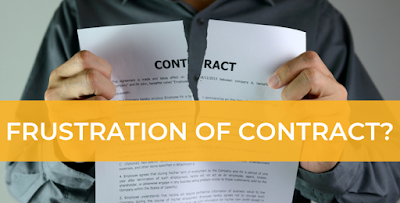Case Analysis of Royal Brunei Airlines v Tan, an important Equity and Trusts law case on breach of trust and liability for dishonest assistance.
In Royal Brunei Airlines v Tan1, Lord Nicholls of Birkenhead, delivering the advice of the Privy Council, marked a significant shift away from the requirement of knowledge as a necessary ingredient of a claim against a person who assisted in a breach of trust. Instead, a concrete foundation for judicial development of a civil law test based on dishonesty was laid down. Even though the decision was merely of persuasive authority, it was welcomed by both practitioners and academics, as disposing of the “tortuous convolutions” which had thus far characterised the “knowing assistance” jurisprudence.2 Nonetheless, what appeared to be a straightforward definition of “dishonesty” was unnecessarily tampered with in subsequent case law. This paper seeks to provide an analysis of the judgment with particular emphasis being placed upon the meaning afforded to the crucial concept of dishonesty.
In brief, the defendant, Philip Tan, was the managing director of Borneo Leisure Travel (BLT), a travel agency appointed by the claimant, Royal Brunei Airlines (RBA), to act on its behalf in the sale of passenger and cargo transportation within certain region. In accordance with the agreement, all moneys received were to be held “in trust for the carrier [...] until satisfactorily accounted for”.3 With the economic situation of BLT deteriorating, the defendant authorised the company to use the money for ordinary business purposes. Eventually, BLT became insolvent. RBA thus sued the defendant personally in respect of the unpaid money.
The Privy Council held that where a third party dishonestly assisted a trustee to commit a breach of trust or procured him to do so, that third party would be liable in personam to the beneficiary for the damage sustained by the breach of trust, regardless of whether he had received any trust property and irrespective of whether the trustee himself had been dishonest. Dishonesty, being “the touchstone of liability” 4 in a claim for an assistance in a breach of trust, is to be judged objectively by reference to the way an honest person would act in the circumstances faced by a given defendant.5
It is submitted that the decision in Tan constitutes a significant and desired development in the law of equity and trust. Prior to the “magisterial opinion”6 of the Privy Council, there had been a tendency to treat Lord Selborne L.C.’s famous dictum in Barnes v Addy7, as though it were a statute, which led, implicitly, to neglect of the underlying concept of accessory liability.8 Indeed, as asserted by Lord Nicholls, framing the relevant question in the form of “knowing assistance”, as opposed to “knowing receipt”9, invokes a meandering exercise of determining the “sort” of knowledge required, “when the truth is that ‘knowingly’ is inapt as a criterion when applied to the gradually darkening spectrum where the differences are of degree and not kind”.10 Introducing a test based upon the notion of dishonesty removed the uncertainty inherent in employing the scale of knowledge adopted in Baden v Societe Generate pour Favoriser le Developpement du Commerce et de. I'Industrie en France S.A. (Note).11 Although a dishonest mind is a subjective mental state, the standard by which the law determines whether it is dishonest is objective in nature.12 In truth, the “simple and coherent”13 test propounded by Lord Nicholls, founded on the “tolerably clear”14 idea of dishonesty, is neither “difficult”15 nor “too complicated”16 to apply.
Notwithstanding that the test adopted by the Privy Council in Tan is a remarkably flexible tool in achieving a fair outcome in a particular case, it is equally susceptible to misapplication. Equity is a system of jurisprudence devised to supplement common and statutory law where the two are inadequate in serving justice. Lord Nicholls appears to have endorsed “I know it when I see it”17 approach, when suggesting that “[i]n most situations there is little difficulty in identifying how an honest person would behave”.18 Relying upon that dictum, Margaret Halliwell and Elizabeth Prochaska asserted that so long as the court is able to articulate the basis for dishonesty in a given factual scenario, there is no need to apply any specified method of ascertaining such a state of mind.19 With respect, there is much more than an element of naivety in this “clarion call for practicality”.20 Allowing a court to make a finding of dishonesty detached from any rule of law could lead to “palm tree justice”. While the flexibility of equity is critical, the intention of such intervention must encompass principle. In the context of accessory liability judges are faced with a difficult task of employing a civil standard of proof to “essentially a jury question”21 without the benefit of a jury and with potentially grievous consequences for the defendant. Favouring a rigid approach to the question of dishonesty would undoubtedly increase certainty and clarity of the law. Nonetheless, it would proportionally deprive the court of means to achieve a just result. It is submitted that the unfortunate dictum of Lord Nicholls should not be construed too strictly so as to permit judicial discretion in the form proposed by Halliwell and Prochaska. Although the meaning afforded to dishonesty is not too specific, if at all, the guidance provided by the Privy Council throughout the advice delivered should be sufficient to dispose of the danger outlined above.
It is with regret that the test for dishonest assistance adopted in Tan was not universally accepted in subsequent case law. In Twinsectra v Yardley the majority of the House of Lords, Lord Millett dissenting, supported a two-tier combined examination resembling closely the one advanced, albeit in a different context, by the Court of Appeal in R v Ghosh.22 Surprisingly, their Lordships did not consider it necessary to depart in principle from the reasoning of the Privy Council in Tan. Even though they were not bound to do so, such a step would act in the interest of certainty and clarity of the law. Instead, the House of Lords held that Tan established a dual subjective/objective test, so that it must be established not only that “the defendant's conduct was dishonest by the ordinary standards of reasonable and honest people” but also “that he himself realised that by those standards his conduct was dishonest”.23 Needless to say, the speech of Lord Hutton, with whom Lords Slynn, Steyn and Hoffmann agreed24, is at odds with the advice delivered by the Privy Council in Tan. One might argue that Lord Nicholls left space for such a conclusion by stating that honesty has both a connotation of subjectivity and “a strong subjective element in that it is a description of a type of conduct assessed in the light of what a person actually knew at the time, as distinct from what a reasonable person would have known or appreciated”.25 It is, however, abundantly clear from his Lordship’s judgment that the standard of what constitutes an honest conduct is not subjective.26 Were it otherwise, one could imagine an individual, deprived of any moral standard, avoiding liability for dishonest assistance purely due to a subjective belief as to the rightfulness of the action taken, regardless of the actual perception of the act by an honest and reasonable person.27 There is, indeed, little, if any, difference between the “combined test”28 and “the Robin Hood test”29, as both ultimately lead to the assessment of the subjective intention of a defendant and are thus unacceptable.30 Even the dissenting opinion of Lord Millett cannot escape criticism. His Lordship forcefully attempted to trace in Lord Nicholls’ opinion support for the plausible idea of differentiating between one’s conduct and one’s state of mind for the purpose of finding dishonesty.31 In any event, it is submitted that the approach adopted in Tan is to be preferred to that enunciated in Twinsectra v Yardley, irrespective of the binding nature of the latter.32 This opinion was shared, with varying emphasis, by the Privy Council in Barlow Clowes v Eurotrust33, Arden L.J. in Abu Rahmah v Abacha34, and the Court of Appeal in Starglade Properties Ltd v Nash.35 In the last of these cases, Levenson L.J indicated that an appellate court should revisit the law on dishonest assistance within civil jurisdiction in order to dispose of the existing uncertainties surrounding the issue.36
It was argued in the course of this paper that the advice delivered by the Privy Council in Tan constitutes an important and welcomed development of the law related to assistance in a breach of trust. By departing from a knowledge-based test and adopting an objective definition of dishonesty, Lord Nicholls provided for a flexible tool with which a court might administer justice in order to achieve a fair outcome in a particular case. With a view to the unsatisfactory nature of the other two tests proposed subsequently, it is to be hoped that the decision in Tan will shortly receive the status of a precedent in the law of England and Wales.
1 [1995] 2 AC 378. Hereinafter “Tan”.
2 ibid., 391.
3 ibid., 382.
4 ibid., 387.
5 ibid., 389.
6 See Twinsectra Ltd v Yardley [2002] 2 A.C. 164, 195 (Lord Millett).
7 (1874) L.R. 9 Ch. App. 244, 251-252.
8 See n 1, 386.
9 Examination of “knowing receipt” is beyond the scope of this paper.
10 See n 1, 391.
11 [1992] 4 All ER 161, 235 (Peter Gibson J.).
12 D Ryan, ‘Royal Brunei Dishonesty: Clarity at Last?’ [2006] Conv 188, 188-189.
13 C Harpum, ‘Accessory Liability for Procuring or Assisting a Breach of Trust’ (1995) L.Q.R. 545, 548.
14 See n 12, 189.
15 See Grupo Torras SA v Al-Sabah (No.5) [2001] C.L.C. 221, [110].
16 M Halliwell, E Prochaska, ‘Assistance and Dishonesty: ring-a-ring o'roses’ (2006) Conv 466, 474.
17 See Jacobellis v. Ohio (1964) 378 U.S. 184, 197 (Justice Potter Stewart).
18 See n 1, 389.
19 See n 16, 474.
20 ibid., 475.
21 Agip (Africa) Ltd v Jackson [1990] Ch. 265, 294 (Millett L.J.).
22 [1982] 3 W.L.R. 110. Discussion of the test for dishonesty in criminal law is beyond the ambit of this essay.
23 See n 6, [27] (Lord Hutton).
24 ibid., [6], [8] and [20], respectively.
25 See n 1, 389.
26 ibid. Emphasis added.
27 For support of this view, see A Hudson, ‘Persistent Problems with the Objective Dishonesty Test’ <http://www.alastairhudson.com/trustslaw/Persistent%20problems%20with%20the%20objective%20dishonesty %20test.pdf>.
28 See n 6, [27].
29 ibid.
30 See, generally, H Tjio, TM Yeo, ‘Knowing What is Dishonesty’ (2002) 118 L.Q.R. 502.
31 See n 6, [123] and [127]. See also R Thornton, ‘Dishonest Assistance: Guilty Conduct or a Guilty Mind?’ (2002) 61(3) C.L.J. 524.
32 See P Shine, ‘Dishonesty in Civil Commercial Claims: a State of Mind or a Course of Conduct?’ (2012) J.B.L. 29, 32-33; cf J Ross, ‘The Test for Dishonest Assistance’ (2002) 152 N.L.J. 883, 884.
33 [2005] UKPC 37; [2006] 1 W.L.R. 1476, [15] (Lord Hoffmann, delivering the advice of the Privy Council). It is worth noting that of the five judges who comprised the board, one (Lord Nicholls) had delivered the Advice of the Board in Tan and two (Lords Steyn and Hoffmann) had been in the majority in the House of Lords in Twinsectra v Yardley, both making speeches concurring with Lord Hutton.
34 [2006] EWCA Civ 1492; [2007] Bus. L.R. 220, [31].
35 [2010] EWHC 148 (Ch); [2010] W.T.L.R. 1267, [25], [29] and [32] (Lord Chancellor).
36 ibid., [44].
Law Tutors Online, UK Law Tutor, UK Law Notes, Manchester Law Tutor, Birmingham Law Tutor, Nottingham Law Tutor, Oxford Law Tutor, Cambridge Law Tutor, New York Law Tutor, Sydney Law Tutor, Singapore Law Tutor, Hong Kong Law Tutor, London Tutors, Top Tutors Online and London Law Tutor are trading names of London Law Tutor Ltd. which is a company registered in England and Wales. Company Registration Number: 08253481. VAT Registration Number: 160291824 Registered Data Controller: ZA236376 Registered office: Berkeley Square House, Berkeley Square, London, UK W1J 6BD. All Rights Reserved. Copyright © 2012-2024.


